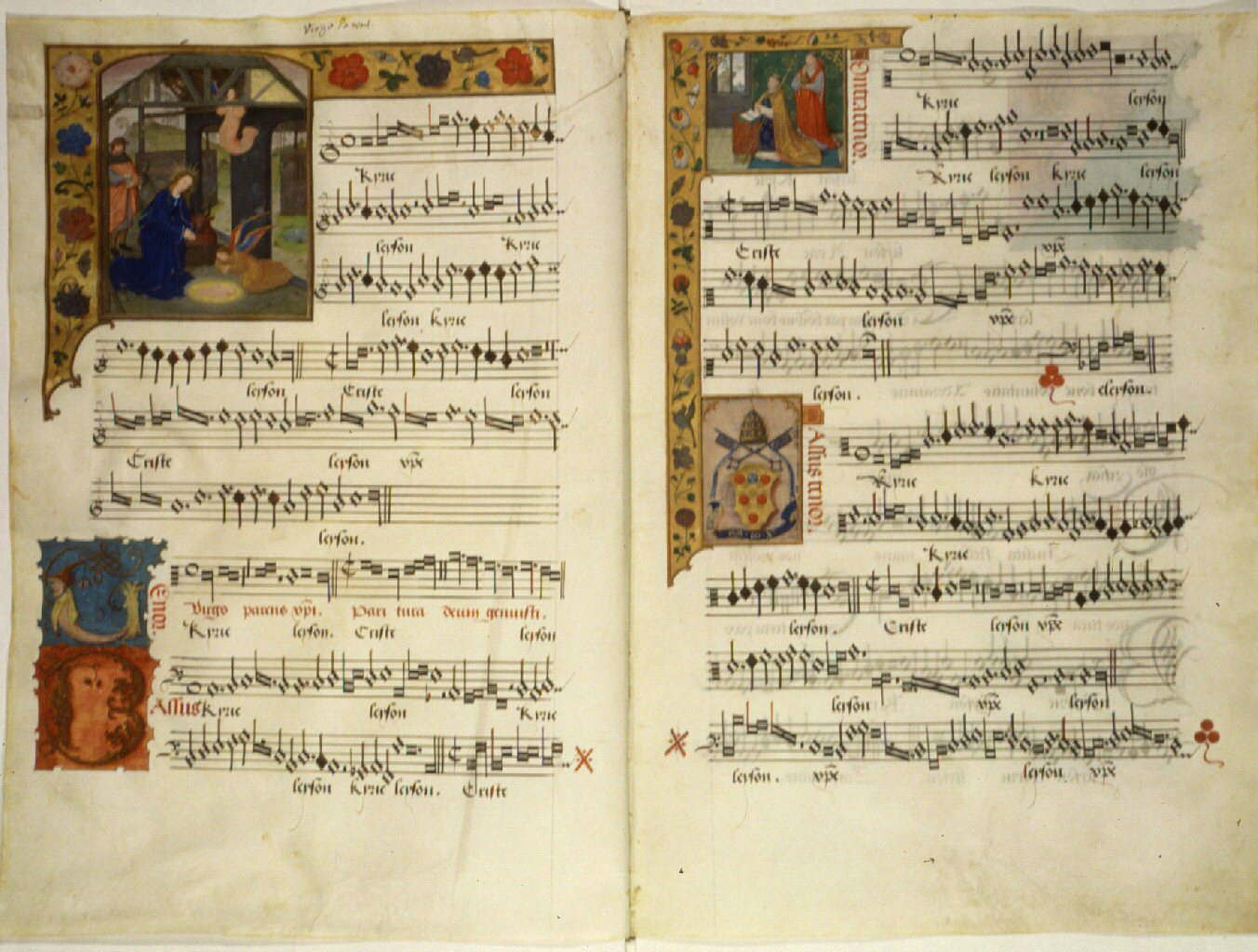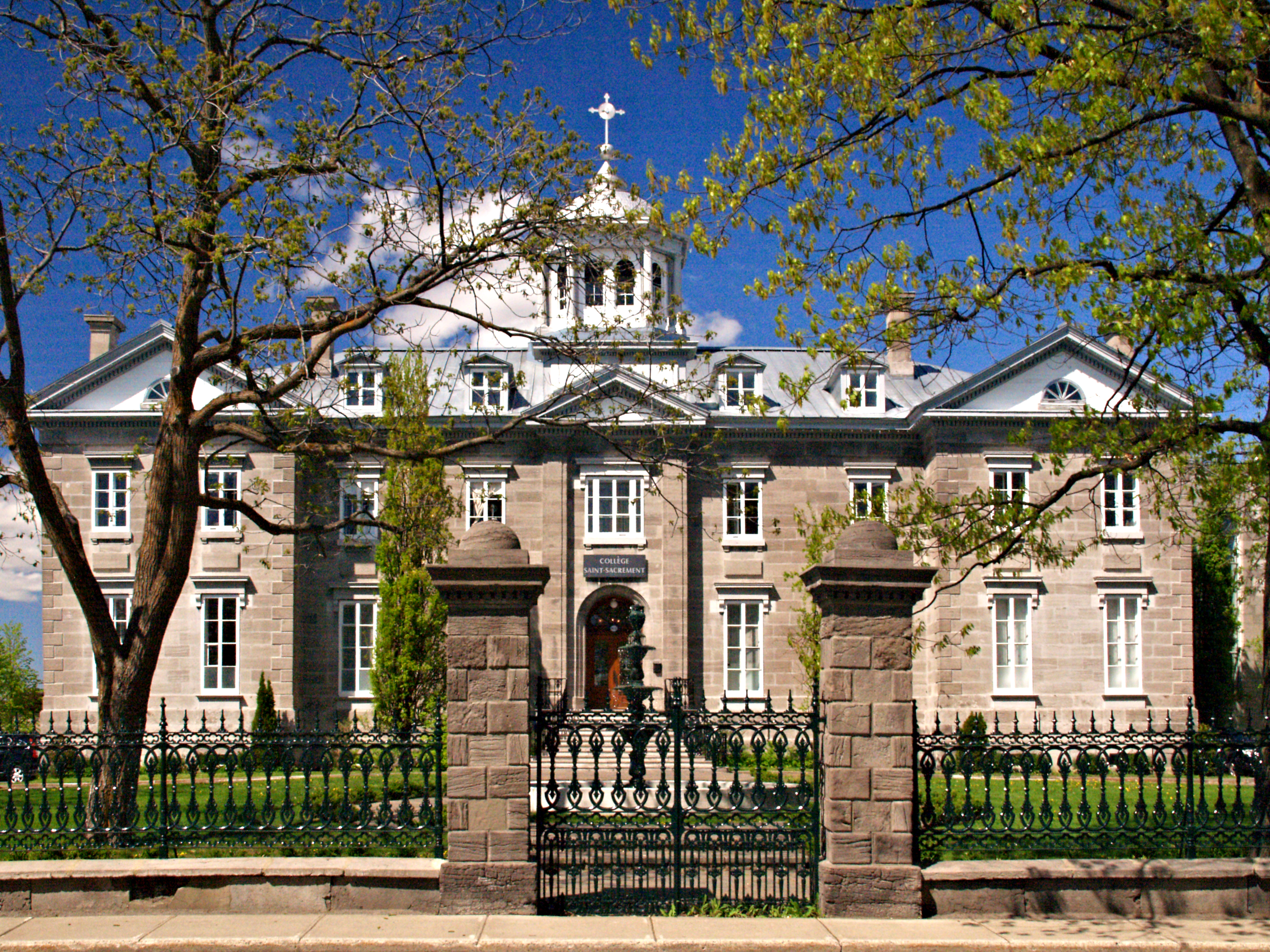|
Jean-Chrysostome Brauneis II
Jean- or John-Chrysostome Brauneis II, (26 January 1814 – 11 August 1871) was a Canadian composer, organist, and music educator. A multifaceted musician, Brauneis instructed students in many musical subjects, including composition, conducting, guitar, harp, organ, piano, violin, voice, and theory. Considered Canada's first native musician to be trained in Europe, he was a highly influential teacher and figure in the classical music scene in 19th century Montreal. His most well known composition, ''The Royal Welcome Waltzes'' (1869), is still performed in concert and was recorded on disc by Symphony Nova Scotia in 1987. Life and career Born in Quebec City, Brauneis was the son of composer and bandmaster Jean-Chrysostome Brauneis I. He began his studies with his father, but went on to become the first native born Canadian to study music in Europe, where he resided from 1830 until 1833. After returning to Canada, he served as organist at Notre-Dame Church from 1833 until 1844, and ... [...More Info...] [...Related Items...] OR: [Wikipedia] [Google] [Baidu] |
Composer
A composer is a person who writes music. The term is especially used to indicate composers of Western classical music, or those who are composers by occupation. Many composers are, or were, also skilled performers of music. Etymology and definition The term is descended from Latin, ''compōnō''; literally "one who puts together". The earliest use of the term in a musical context given by the ''Oxford English Dictionary'' is from Thomas Morley's 1597 ''A Plain and Easy Introduction to Practical Music'', where he says "Some wil be good descanters ..and yet wil be but bad composers". "Composer" is a loose term that generally refers to any person who writes music. More specifically, it is often used to denote people who are composers by occupation, or those who work in the tradition of Western classical music. Writers of exclusively or primarily songs may be called composers, but since the 20th century the terms ' songwriter' or ' singer-songwriter' are more often used, p ... [...More Info...] [...Related Items...] OR: [Wikipedia] [Google] [Baidu] |
Mass (music)
The Mass () is a form of sacred musical composition that sets the invariable portions of the Christian Eucharistic liturgy (principally that of the Catholic Church, the Anglican Communion, and Lutheranism), known as the Mass. Most Masses are settings of the liturgy in Latin, the sacred language of the Catholic Church's Roman Rite, but there are a significant number written in the languages of non-Catholic countries where vernacular worship has long been the norm. For example, there have been many Masses written in English for a United States context since the Second Vatican Council, and others (often called "communion services") for the Church of England. Masses can be ''a cappella'', that is, without an independent accompaniment, or they can be accompanied by instrumental '' obbligatos'' up to and including a full orchestra. Many masses, especially later ones, were never intended to be performed during the celebration of an actual mass. History Middle Ages The earliest ... [...More Info...] [...Related Items...] OR: [Wikipedia] [Google] [Baidu] |
19th-century Organists
The 19th century began on 1 January 1801 (represented by the Roman numerals MDCCCI), and ended on 31 December 1900 (MCM). It was the 9th century of the 2nd millennium. It was characterized by vast social upheaval. Slavery was abolished in much of Europe and the Americas. The First Industrial Revolution, though it began in the late 18th century, expanded beyond its British homeland for the first time during the 19th century, particularly remaking the economies and societies of the Low Countries, France, the Rhineland, Northern Italy, and the Northeastern United States. A few decades later, the Second Industrial Revolution led to ever more massive urbanization and much higher levels of productivity, profit, and prosperity, a pattern that continued into the 20th century. The Catholic Church, in response to the growing influence and power of modernism, secularism and materialism, formed the First Vatican Council in the late 19th century to deal with such problems and confirm ce ... [...More Info...] [...Related Items...] OR: [Wikipedia] [Google] [Baidu] |
1871 Deaths
Events January–March * January 3 – Franco-Prussian War: Battle of Bapaume – Prussians win a strategic victory. * January 18 – Proclamation of the German Empire: The member states of the North German Confederation and the south German states unite into a single nation state, known as the German Empire. The King of Prussia is declared the first German Emperor as Wilhelm I of Germany, in the Hall of Mirrors at the Palace of Versailles. The Constitution of the German Confederation comes into effect. It abolishes all restrictions on Jewish marriage, choice of occupation, place of residence, and property ownership, but exclusion from government employment and discrimination in social relations remain in effect. * January 21 – Battle of Dijon: Giuseppe Garibaldi's group of French and Italian volunteer troops, in support of the French Third Republic, win a battle against the Prussians. * February 8 – 1871 French legislative election elects the first legislatu ... [...More Info...] [...Related Items...] OR: [Wikipedia] [Google] [Baidu] |
1814 Births
Events January * January 1 – War of the Sixth Coalition – The Royal Prussian Army led by Gebhard Leberecht von Blücher crosses the Rhine. * January 3 ** War of the Sixth Coalition – Siege of Cattaro: French garrison surrenders to the British after ten days of bombardment. ** War of the Sixth Coalition – Siege of Metz: Allied armies lay siege to the French city and fortress of Metz. * January 5 – Mexican War of Independence – Battle of Puruarán: Spanish Royalists defeat Mexican Rebels. * January 11 – War of the Sixth Coalition – Battle of Hoogstraten: Prussian forces under Friedrich Wilhelm Freiherr von Bülow defeat the French. * January 14 ** Treaty of Kiel: Frederick VI of Denmark cedes the Kingdom of Norway into personal union with Sweden, in exchange for west Pomerania. This marks the end of the real union of Denmark-Norway. ** War of the Sixth Coalition – Siege of Antwerp: Allied forces besiege Fre ... [...More Info...] [...Related Items...] OR: [Wikipedia] [Google] [Baidu] |
Louis De Lotbiniere-Harwood
Louis de Lotbinière-Harwood (1866–1934) F.A.C.S., was a Canadian gynaecologist. He was Dean of Medicine at Université de Montréal, the second campus of Université Laval. He was President of the Medical Union of Canada, President of the Hôpital Notre-Dame and President of the Radium Institute, Paris. His reputation as an educator and a surgeon extended throughout North America and Europe, recognised through his creation as an ''Officier de Le Légion d'honneur'' in France. He has been referred to as the 'Father of Canadian Gynaecology'. Early life Born at the Manor of Vaudreuil, he was the son of the Hon. Henry Stanislas Harwood and his wife Josephine Sydney Brauneis, daughter of Jean-Chrysostome Brauneis II. He was a nephew of Antoine Chartier de Lotbinière Harwood, Robert Harwood and Sir Henri Elzéar Taschereau, and a first cousin of the wife of Major-General Sir Sam Steele. De Lotbiniere-Harwood was educated at the Séminaire de Ste-Thérèse and afterwards at t ... [...More Info...] [...Related Items...] OR: [Wikipedia] [Google] [Baidu] |
Henry Stanislas Harwood
Henry Stanislas de Lotbiniere Harwood (August 8, 1838 – August 28, 1911) was a landowner and political figure in Quebec. He represented Vaudreuil in the House of Commons of Canada as a Liberal member from 1891 to 1892 and 1893 to 1904. Born at the Manor of Vaudreuil, Quebec, the eldest son of Robert Unwin Harwood and Marie-Louise-Josephte Chartier de Lotbiniere (1803–1869), Seigneuress of Vaudreuil, the eldest daughter of Michel-Eustache-Gaspard-Alain Chartier de Lotbiniere, ''de jure'' 2nd Marquis de Lotbiniere. His brother, Robert William Harwood, had also represented Vaudreuil in the House of Commons and another brother, Antoine Chartier de Lotbiniere Harwood represented Vaudreuil in the Quebec Assembly. at [...More Info...] [...Related Items...] OR: [Wikipedia] [Google] [Baidu] |
Montreal
Montreal is the List of towns in Quebec, largest city in the Provinces and territories of Canada, province of Quebec, the List of the largest municipalities in Canada by population, second-largest in Canada, and the List of North American cities by population, ninth-largest in North America. It was founded in 1642 as ''Fort Ville-Marie, Ville-Marie'', or "City of Mary", and is now named after Mount Royal, the triple-peaked mountain around which the early settlement was built. The city is centred on the Island of Montreal and a few, much smaller, peripheral islands, the largest of which is Île Bizard. The city is east of the national capital, Ottawa, and southwest of the provincial capital, Quebec City. the city had a population of 1,762,949, and a Census geographic units of Canada#Census metropolitan areas, metropolitan population of 4,291,732, making it the List of census metropolitan areas and agglomerations in Canada, second-largest metropolitan area in Canada. French l ... [...More Info...] [...Related Items...] OR: [Wikipedia] [Google] [Baidu] |
Canadian Musical Heritage Society
Canadians () are people identified with the country of Canada. This connection may be residential, legal, historical or cultural. For most Canadians, many (or all) of these connections exist and are collectively the source of their being ''Canadian''. Canada is a multilingual and multicultural society home to people of groups of many different ethnic, religious, and national origins, with the majority of the population made up of Old World immigrants and their descendants. Following the initial period of French and then the much larger British colonization, different waves (or peaks) of immigration and settlement of non-indigenous peoples took place over the course of nearly two centuries and continue today. Elements of Indigenous, French, British, and more recent immigrant customs, languages, and religions have combined to form the culture of Canada, and thus a Canadian identity and Canadian values. Canada has also been strongly influenced by its linguistic, geographic, and ... [...More Info...] [...Related Items...] OR: [Wikipedia] [Google] [Baidu] |
Prince Arthur, Duke Of Connaught And Strathearn
Prince Arthur, Duke of Connaught and Strathearn (Arthur William Patrick Albert; 1 May 185016 January 1942) was the seventh child and third son of Queen Victoria of the United Kingdom and Prince Albert of Saxe-Coburg and Gotha. He served as Governor General of Canada, the List of Governors General of Canada#Governors General of Canada, 1867–present, tenth since Canadian Confederation and the only British prince to do so. Arthur was educated by private tutors before entering the Royal Military Academy at Woolwich at 16 years old. Upon graduation, he was commissioned as a lieutenant in the British Army, where he served for some 40 years, seeing service in various parts of the British Empire. During this time, he was also created a royal duke, becoming Duke of Connaught and Strathearn as well as Earl of Sussex. In 1900, he was appointed as Commander-in-Chief, Ireland, which he regretted; his preference was to join the Second Boer War, campaign against the Boers in South Africa. In ... [...More Info...] [...Related Items...] OR: [Wikipedia] [Google] [Baidu] |







